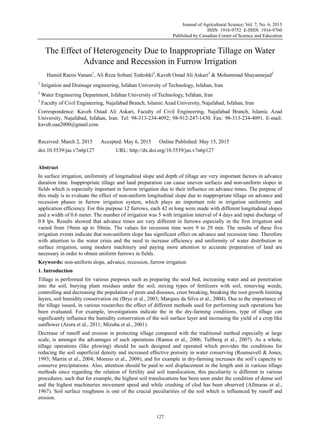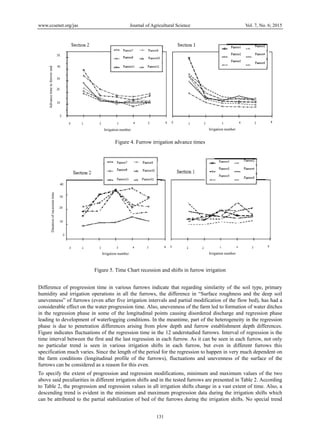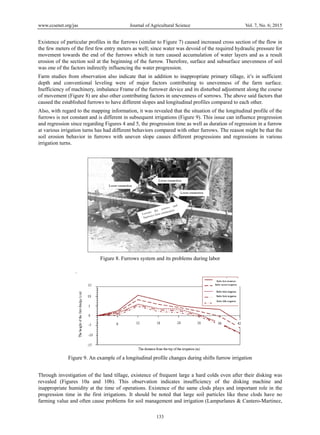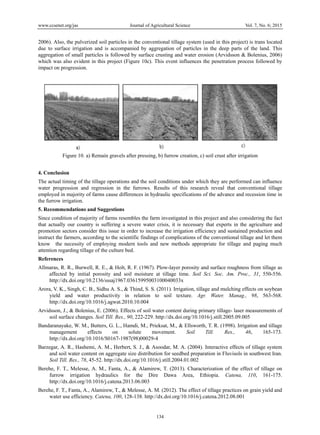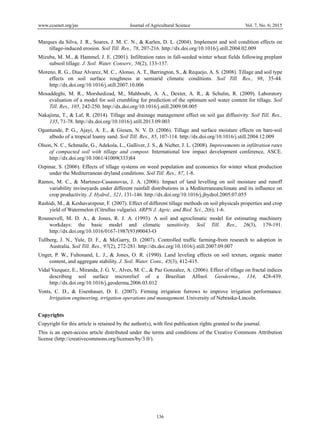This document summarizes a study that evaluated the effect of non-uniform longitudinal slopes due to inappropriate tillage on water advance and recession in furrow irrigation. 12 furrows of varying slopes were tested over 5 irrigation events. Results showed advance times varied significantly between furrows, from 19-50 minutes for the first irrigation. Recession times also varied widely between furrows, from 9-29 minutes. The results indicate that non-uniform slopes due to inappropriate tillage have a significant impact on advance and recession times in furrow irrigation, affecting irrigation uniformity and efficiency. More accurate land preparation and uniform furrows are needed to improve water distribution and use.
